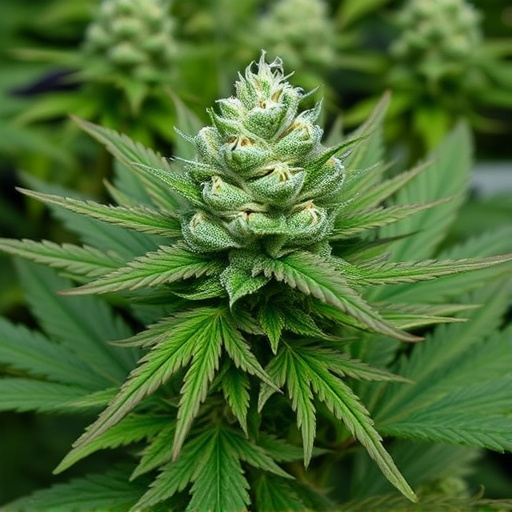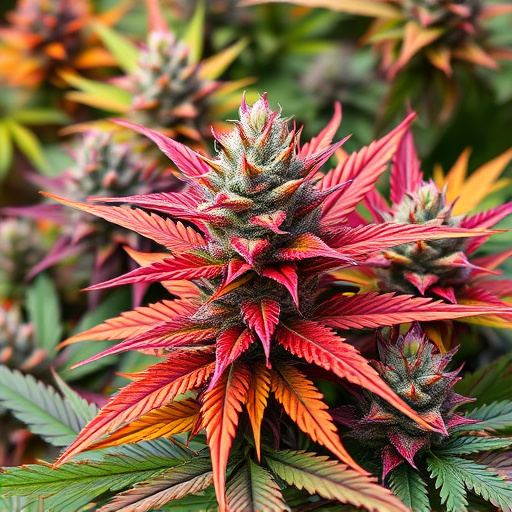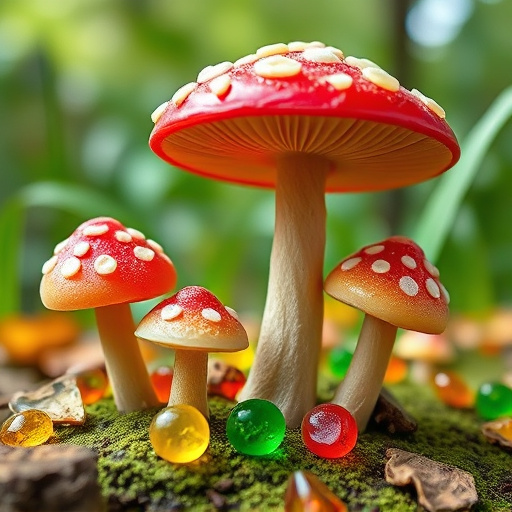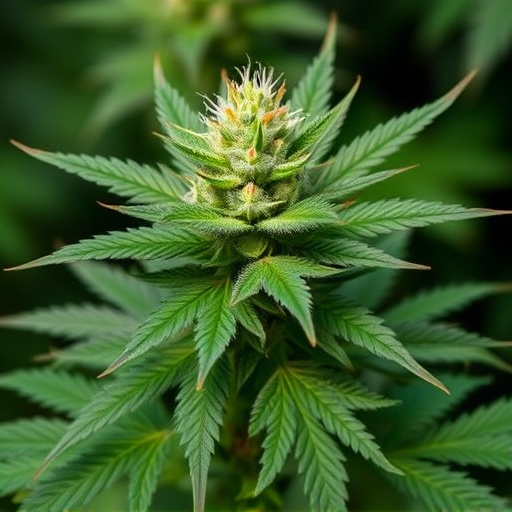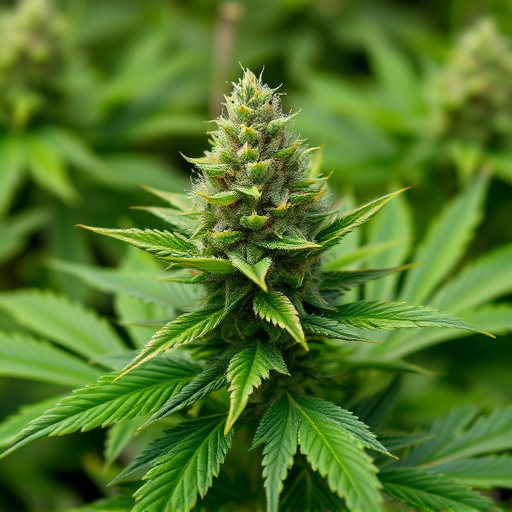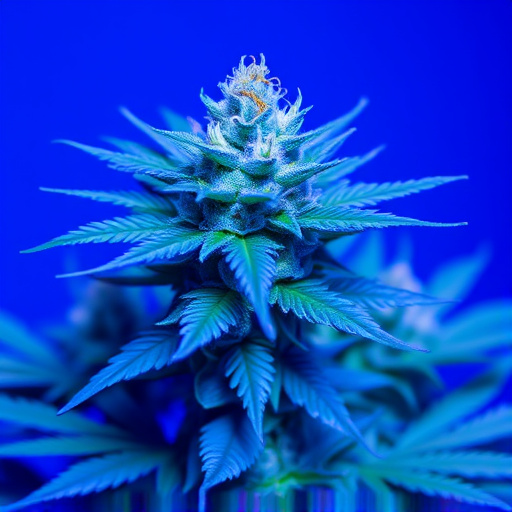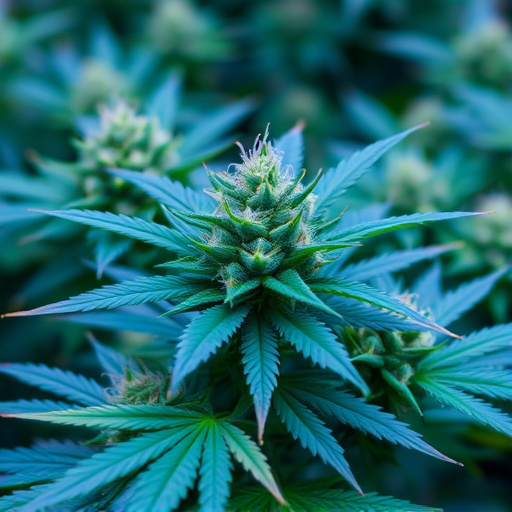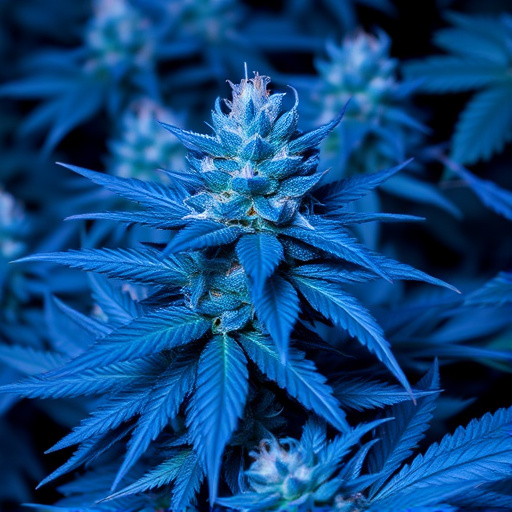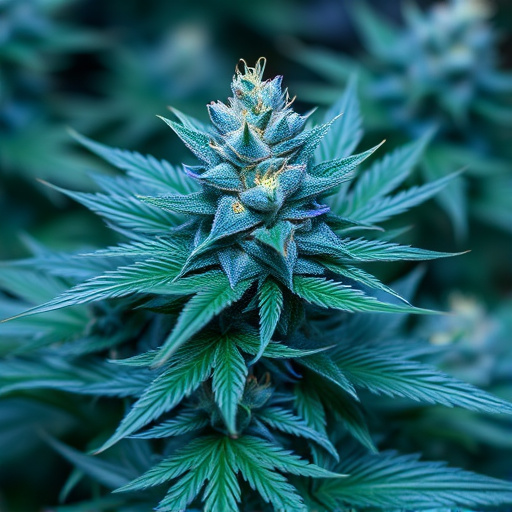Blue marijuana strains, rich in tetrahydrocannabinol (THC) and terpenes, interact with our bodies' endocannabinoid system to influence mood, memory, coordination, and appetite. THC specifically targets hunger hormones leptin and ghrelin, leading to variable effects on users' appetites—a phenomenon known as "the munchies." This understanding is crucial for both scientific study and responsible cannabis use, offering potential therapeutic benefits for conditions like anorexia or cachexia. However, individual responses vary, with some experiencing overeating or changes in taste perception, necessitating personal reaction awareness and healthcare professional consultation when using cannabis for hunger management.
THC, the primary psychoactive compound in cannabis, significantly influences hunger hormones through its interaction with the endocannabinoid system. This article delves into how THC affects appetite, exploring specific impacts of blue marijuana strains known for their unique profiles. We’ll discuss potential benefits and considerations for users, shedding light on the complex relationship between THC and eating behavior. By understanding these dynamics, consumers can make informed decisions regarding their use of blue marijuana strains.
- Understanding THC and its Interaction with the Endocannabinoid System
- The Impact of Blue Marijuana Strains on Hunger Hormones
- Potential Benefits and Considerations for Users
Understanding THC and its Interaction with the Endocannabinoid System
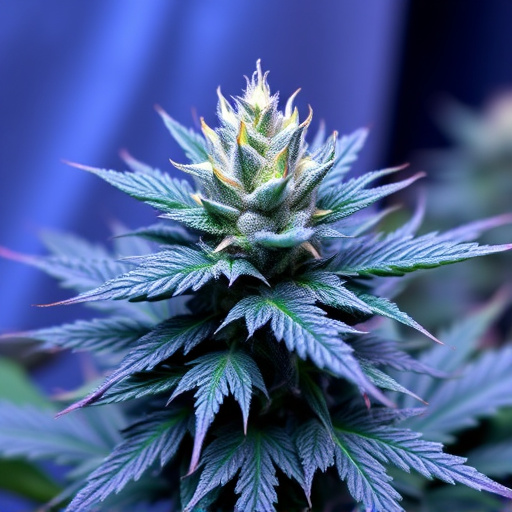
THC, or tetrahydrocannabinol, is a prominent chemical compound found in blue marijuana strains that interacts with our bodies’ endocannabinoid system (ECS). The ECS is a complex network of receptors located throughout the brain and body, responsible for maintaining homeostasis, or balance. When THC binds to specific receptors in the ECS, particularly CB1 receptors in the brain and CB2 receptors in the immune system, it triggers various physiological responses. This interaction can influence mood, memory, coordination, appetite, and more.
The impact of THC on hunger hormones is a well-documented aspect of its effects. By interacting with the ECS, THC can stimulate the release of hormones like leptin and ghrelin, which play crucial roles in regulating appetite and feelings of fullness. This mechanism may contribute to why some users experience increased hunger or cravings after consuming cannabis, while others report reduced appetite. Understanding these complex interactions is essential for both scientific research and responsible cannabis use, especially when considering the potential therapeutic applications of blue marijuana strains in various conditions.
The Impact of Blue Marijuana Strains on Hunger Hormones
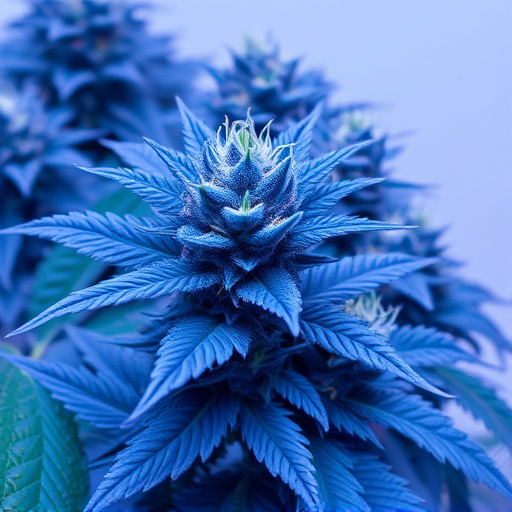
Blue marijuana strains have gained popularity for their potential therapeutic benefits, and one area of interest is their effect on hunger hormones. These strains often contain higher levels of terpenes and cannabinoids, including tetrahydrocannabinol (THC), which interact with the endocannabinoid system in our bodies. Research suggests that THC can influence appetite and food intake by targeting specific receptors. When consumed, blue strains may lead to a temporary increase in hunger, often referredring to as “the munchies.” This effect is attributed to THC’s ability to stimulate the hypothalamus, a region of the brain that regulates eating and metabolism.
The unique chemical profile of blue marijuana strains contributes to their distinct effects on hunger hormones. Terpenes present in these strains can modulate the activity of THC at different receptors, potentially leading to varying outcomes in appetite stimulation. Some studies even propose that specific terpenes might counteract THC’s appetite-increasing properties, creating a more nuanced experience for users. Understanding this interplay between blue marijuana strains and hunger hormones offers insights into their potential applications in both recreational and medicinal contexts.
Potential Benefits and Considerations for Users
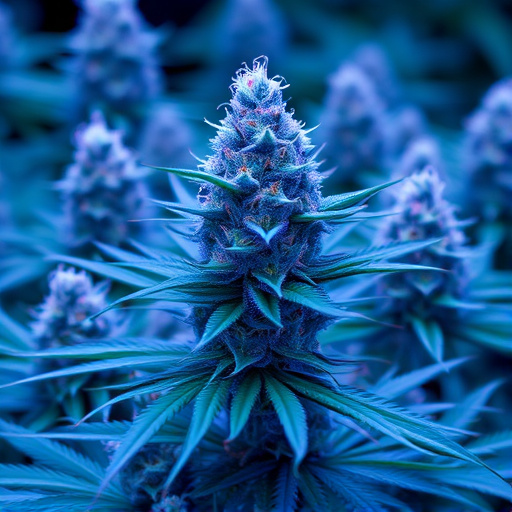
THC, the primary psychoactive compound in cannabis, has been known to stimulate appetite and alter hunger hormones. This effect is particularly notable with specific blue marijuana strains, which often have higher THC concentrations. For users looking to manage conditions like anorexia or cachexia, this can be a beneficial tool. The increased appetite can lead to improved nutrition intake, promoting overall health and well-being.
However, it’s essential to consider that THC’s influence on hunger hormones is complex. While it may encourage eating, the experience varies from person to person. Some users might find themselves overeating or experiencing changes in taste perception. Moreover, regular or heavy consumption could lead to dependency or increased appetite over time, which may not be suitable for everyone, especially those aiming for weight management. Therefore, understanding individual responses and consulting healthcare professionals is crucial when considering cannabis as a means to manage hunger-related issues.
THC’s interaction with the endocannabinoid system can significantly influence hunger hormones, as evidenced by the effects of blue marijuana strains. Research suggests that these strains may help regulate appetite, offering potential benefits for users seeking weight management or those dealing with conditions like anorexia. However, individual responses vary, and further studies are needed to fully understand the scope of THC’s effects on hunger. Always consult a healthcare professional before incorporating cannabis into your routine.
